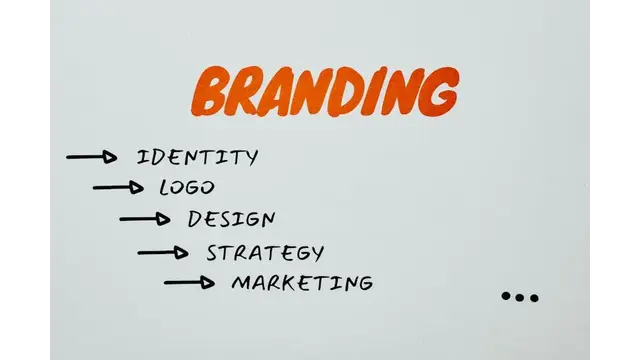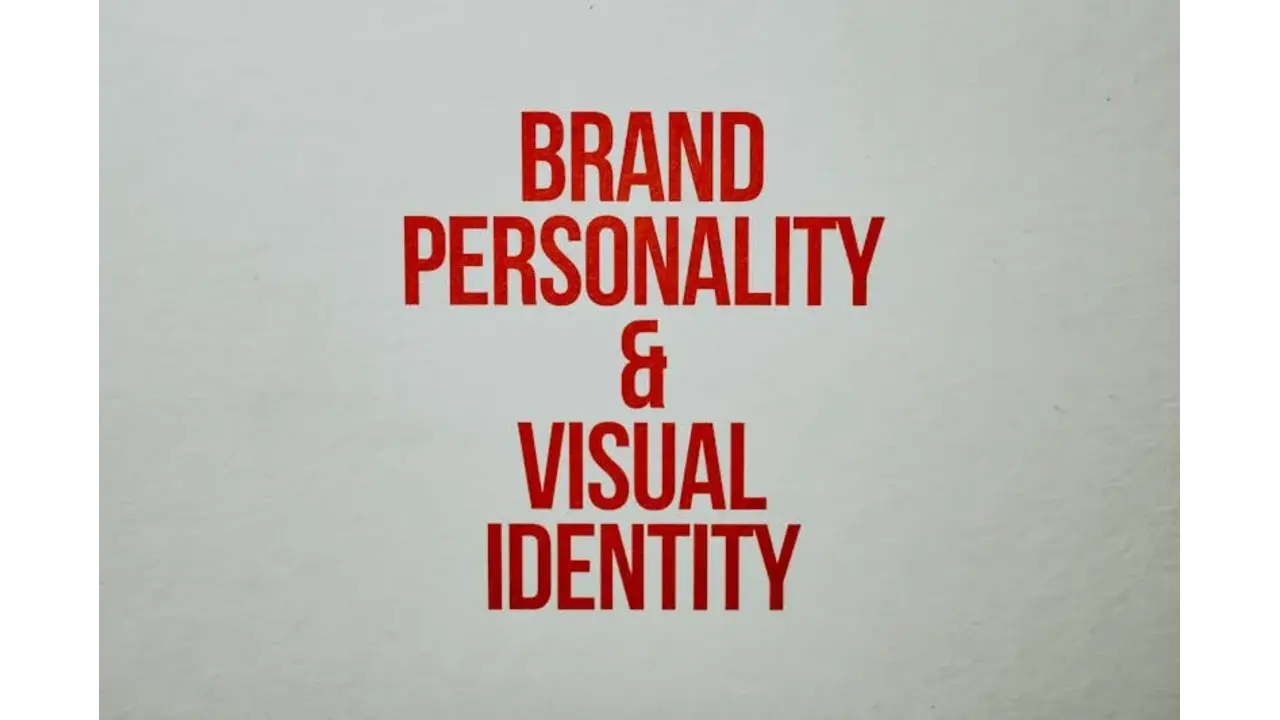In today’s competitive world, standing out isn’t just about offering a great product or service—it’s about how you present your business to the world. That’s where design and branding come into play.
But what exactly are design and branding? How do they help your business thrive?
Let’s understand these concepts and explore their importance in building a strong and successful business identity.
Key Takeaways:
- Design and Branding Work Together: Design focuses on visual elements, while branding builds emotional connections. Together, they create a cohesive identity that sets businesses apart.
- First Impressions Matter: A strong, well-thought-out design can grab attention and establish professionalism.
- Consistency is Key: Using the same design elements across all platforms builds recognition and trust.
- Emotional Connections Drive Loyalty: Branding that resonates with audience values fosters lasting relationships.
- Digital Presence is Essential: A strong online presence, consistent branding across platforms, and good user experience design are vital in today’s digital age.
- Learn from Success Stories: Brands like Apple, Nike, and Coca-Cola show the importance of simplicity, emotional resonance, and consistency in branding.
Table of Contents

What is Design and Branding?
At first glance, design and branding might seem like fancy buzzwords, but they’re fundamental to how people perceive your business. Design focuses on the visual elements of your brand, like logos, websites, and packaging. On the other hand, branding is the overall impression and emotional connection customers have with your business.
When done right, design and branding work hand-in-hand to create a cohesive identity that sets your business apart and attracts loyal customers.
Let’s break down these terms for a clearer understanding:
Design
Design involves the creative process of crafting visuals that communicate your brand’s message. It includes graphic design, product design, user experience (UX), and more. A strong design is not just about looking good—it’s about being functional and appealing to your audience.
Branding
Branding goes beyond visuals. It’s about building trust, delivering consistent experiences, and shaping people’s feelings about your business. Your brand combines your voice, values, personality, and the promise you make to your customers.
For instance, think of Apple. Its sleek designs are instantly recognizable, and its branding conveys innovation, simplicity, and quality. That’s the power of design and branding combined!
Importance of Design in Branding
Good design isn’t just pretty—it’s practical. Here’s why design plays a crucial role in branding:
First Impressions Matter
The saying “You never get a second chance to make a first impression” is especially true in branding. Your design is often the first thing potential customers notice about your brand. Whether it’s your logo, website, or product packaging, a strong design can instantly grab attention and convey professionalism.
A well-designed logo, for instance, sets the tone for how your brand is perceived. Think about iconic logos like Apple’s sleek apple or Nike’s simple swoosh—they are not just recognizable but also evoke trust and quality. Without a good design, even a great product might fail to capture attention in a competitive market.
Establishes Brand Identity
Design is an essential tool for expressing your brand’s identity. Every element—colors, typography, imagery, and layout—should align with your brand’s personality and values.
For example:
- A tech company may use clean, modern lines and a minimalist color palette to signal innovation and sophistication.
- A children’s toy brand might use bright colors and playful fonts to convey fun and creativity.
When these elements come together cohesively, they create a strong, recognizable identity that customers can associate with your brand.
Communicates Your Brand’s Message
Great design tells a story. It visually communicates what your brand stands for and how it can benefit customers. A thoughtfully designed brand doesn’t just look good—it sends a clear message.
For example:
- A company promoting sustainability might use earthy tones, natural textures, and eco-friendly packaging to communicate its commitment to the environment.
- A luxury brand might emphasize elegance through high-quality materials, sophisticated fonts, and minimalist aesthetics.
By aligning design with your brand’s message, you ensure that customers understand and connect with your values at a glance.
Enhances Customer Experience
Design plays a significant role in the overall customer experience. A well-designed website or app, for instance, makes it easier for customers to navigate, find information, and make purchases. Similarly, attractive and functional product packaging enhances the unboxing experience, leaving a lasting impression.
User-centric design, particularly in digital branding, focuses on making interactions seamless and enjoyable. A slow-loading website with confusing navigation can frustrate users, while a sleek, responsive site reflects professionalism and builds trust.
Builds Brand Recognition
Consistency in design is key to building brand recognition. When your design elements—like logos, colors, and typography—are used consistently across all platforms, it becomes easier for customers to recognize and remember your brand.
Take Coca-Cola, for example. Its signature red and white colors, paired with its classic font, are instantly recognizable around the globe. Consistent design not only makes your brand memorable but also creates a sense of reliability and trustworthiness among customers.
Differentiates Your Brand
In a crowded market, design helps your brand stand out. A unique and eye-catching design can distinguish your business from competitors and highlight what makes you special.
For instance, a craft coffee shop might use hand-drawn illustrations and earthy tones to set itself apart from a corporate coffee chain with sleek, modern branding. By showcasing your unique personality through design, you can attract customers who resonate with your brand’s values and style.
Influences Buying Decisions
The design has a psychological impact on consumers. Studies show that people are drawn to visually appealing products and are more likely to trust brands with professional design. Everything from the packaging of your product to the layout of your website influences how customers perceive your value and quality.
For instance, premium-looking packaging can justify a higher price point, while a poorly designed website might make customers question your credibility. Investing in quality design can directly impact your bottom line by encouraging more purchases and fostering customer loyalty.
Supports Emotional Connection
The design has the power to evoke emotions. Colors, imagery, and typography can create a mood or feeling that resonates with your audience. This emotional connection is what transforms customers into loyal advocates for your brand.
For example, charities often use warm colors and heartfelt imagery to convey compassion and inspire support, while fitness brands might use bold, energetic designs to motivate action. By appealing to your audience’s emotions through design, you strengthen their connection to your brand.

Role of Branding in Business Success
Branding isn’t just about logos or catchy slogans—it’s about creating an emotional connection with your audience. Here’s how branding contributes to your business success:
Establishes a Unique Identity
In today’s competitive marketplace, standing out is critical. Branding gives your business a unique identity that distinguishes it from competitors. Your brand encapsulates your company’s mission, values, and personality, giving customers a clear idea of what makes you special.
For example, think of Tesla. Its branding is synonymous with innovation, sustainability, and luxury in the electric vehicle market. This distinct identity sets it apart and positions it as a leader in its niche.
Builds Trust and Credibility
A well-crafted brand fosters trust among customers. When people recognize your brand and associate it with quality and consistency, they are more likely to choose your products or services. Trust is especially important in industries where customers must make significant commitments, such as finance, healthcare, or technology.
For instance, companies like IBM and Microsoft have built reputations over decades, making their brands synonymous with reliability and expertise. This trust translates into customer loyalty and long-term success.
Enhances Customer Loyalty
Strong branding goes beyond transactions—it creates lasting relationships. When customers resonate with your brand’s story, values, or personality, they are more likely to stay loyal to your business.
Take Starbucks, for example. Its branding isn’t just about coffee; it’s about creating a warm, welcoming “third place” between home and work. This emotional connection keeps customers coming back, even when cheaper alternatives are available.
Facilitates Emotional Connections
Effective branding taps into the emotions of its audience. People tend to support brands that align with their beliefs, values, or aspirations. This emotional connection is what transforms casual buyers into brand advocates.
For example, Nike’s “Just Do It” campaign inspires people to overcome challenges and push boundaries, making its branding deeply motivational and aspirational. Customers don’t just buy Nike products; they buy into its philosophy.
Attracts and Retains Customers
A strong brand acts as a magnet, drawing in customers who align with its message and offerings. Branding that clearly communicates what your business stands for helps attract the right audience, reducing the likelihood of reaching uninterested or mismatched customers.
Moreover, consistent branding ensures that once customers are on board, they are more likely to stay. Familiarity breeds comfort, and a consistent brand experience across all touchpoints—from social media to customer support—reinforces loyalty.
Adds Value to the Business
Branding isn’t just about external perceptions; it also adds financial value to your business. A strong, well-established brand often commands higher prices, attracts better talent, and becomes a valuable asset in itself.
For example, when companies like Coca-Cola or Apple are evaluated, a significant portion of their value comes from their brand equity. This intangible asset often outpaces the value of their physical assets.
Drives Marketing and Business Growth
Branding provides a foundation for all your marketing efforts. A well-defined brand simplifies the creation of advertising campaigns, promotional materials, and messaging strategies. It ensures consistency, which is key to effective marketing.
When customers already know and trust your brand, your marketing campaigns are more likely to resonate, saving both time and resources while driving better results.
Design and Branding in the Digital Age
The digital age has revolutionized how businesses connect with their audience. With the internet and technology at the forefront, design and branding have taken on new dimensions, emphasizing adaptability, interactivity, and user experience. Let’s explore how design and branding operate in this fast-paced digital landscape.

The Role of Digital Presence in Branding
In today’s connected world, a customer’s first interaction with your brand often happens online. Whether it’s through a website, social media post, or digital advertisement, your online presence sets the tone for your brand’s perception.
A well-designed website, for example, acts as a virtual storefront, creating a lasting impression and inviting users to explore your offerings. Consistent branding across digital platforms—such as logos, colors, and tone of voice—reinforces recognition and builds trust.
Branding Across Multiple Channels
The digital age offers countless channels to interact with customers, from social media and email to websites and apps. Each platform serves as an extension of your brand, making consistency a crucial aspect of digital branding.
For example, your logo, color palette, and tone of voice should remain consistent whether a customer interacts with your brand on Instagram, LinkedIn, or your website. This consistency builds recognition and reinforces trust.
The Importance of User Experience (UX) Design
User experience is a cornerstone of digital branding. Customers expect smooth, intuitive interactions when engaging with your online platforms. Poor navigation, slow load times, or cluttered designs can deter potential customers, regardless of how great your product or service may be.
Effective UX design ensures that users can easily find what they’re looking for, whether it’s a product on your website, contact information, or a checkout button. This not only improves satisfaction but also boosts conversion rates and fosters loyalty.
Social Media as a Branding Tool
Social media platforms are powerful tools for building and maintaining a brand. With billions of users active daily, platforms like Instagram, LinkedIn, and Twitter provide opportunities for businesses to showcase their personalities, engage with audiences, and share their values.
Creative visuals, consistent posting, and authentic interactions can humanize your brand, making it relatable and approachable. Social media also allows for real-time feedback, helping brands adapt to customer preferences quickly.
Adapting to Evolving Trends
The digital landscape is constantly changing, and so are customer expectations. Brands must stay updated on trends such as minimalism, personalization, and interactivity to remain relevant.
For instance, responsive design ensures your website looks great on all devices, from desktops to smartphones. Similarly, incorporating elements like video content or interactive infographics can capture attention and elevate your brand’s digital presence.

Key Elements of Effective Design and Branding
Several key elements come together to form a strong design and branding strategy that helps your business stand out, build trust, and drive success. Let’s explore the fundamental components of effective design and branding.
Logo Design
Your logo is the visual cornerstone of your brand. It is the symbol that represents your business and makes your brand instantly recognizable. A well-designed logo should be simple, memorable, and versatile. It should work across all platforms, from websites to social media, without losing its impact. A great logo captures the essence of your brand and communicates its values, often without needing words.
For example, the iconic Apple logo is minimalist and sleek and reflects the company’s focus on innovation and simplicity.
Color Palette
Colors have a powerful psychological impact on consumers. The right color palette can evoke specific emotions, influence purchasing decisions, and even shape your brand’s identity. For example, blue often represents trust and professionalism, while red can evoke excitement and energy.
When selecting a color palette, it’s important to consider your target audience and the message you want to convey. Consistency in color usage across all brand materials—whether on your website, in advertisements, or on product packaging—reinforces brand recognition and establishes a visual identity.
Typography
Typography, or the style and arrangement of text, plays a crucial role in branding. The font you choose should complement your brand’s personality and be legible across all platforms. Whether you opt for a clean, modern font or a more decorative one, consistency in typography across your branding materials is essential.
For instance, Google uses a simple, sans-serif font that conveys clarity and accessibility, aligning perfectly with its brand identity as a user-friendly tech giant.
Imagery and Visuals
Images are a powerful way to communicate your brand’s message and values. High-quality visuals, including photographs, illustrations, and icons, help tell your brand’s story and make it more relatable to customers. The style of imagery you use should align with the tone of your brand.
For example, luxury brands often use high-quality, elegant imagery to evoke exclusivity and sophistication, while more casual brands may use vibrant, fun images to appeal to a younger audience.
Brand Voice and Messaging
Your brand voice is the tone in which you communicate with your audience. It reflects your brand’s personality and values. Are you formal or casual? Funny or serious? Define your tone and use it consistently in all communications, from social media posts to customer emails. Effective messaging resonates with your target audience and helps reinforce your brand’s identity.
Consistency
Consistency is key to effective branding. All elements—logo, color palette, typography, and imagery—should work together cohesively across all touchpoints. Whether your customers encounter your brand on your website, social media, or in print, they should immediately recognize it. Consistent branding fosters trust and helps build a strong emotional connection with your audience.
User-Centric Design
Always prioritize your audience’s needs. Whether designing a website or packaging, focus on creating intuitive, enjoyable experiences for your customers.
Design and Branding Success Stories
Examining the success of some well-known brands can provide invaluable insights into the power of effective design and branding strategies. These brands have built strong identities through thoughtful design, clear messaging, and consistent execution.
Apple—Simplicity and Innovation
Apple’s design and branding success is rooted in its focus on simplicity and innovation. The company’s sleek, minimalist logo and product designs communicate sophistication and user-centric innovation. Apple’s consistent brand message—focusing on empowering users with elegant, cutting-edge technology—has built a global brand that feels aspirational and approachable at the same time.
Lesson for Small Businesses: Apple’s success teaches small businesses the power of clarity in design. By keeping logos, messaging, and visuals simple and focused on the customer’s needs, businesses can create an identity that stands out without overcomplicating things.
Nike—Emotional Connection Through Branding
Nike is a prime example of a brand that has built an emotional connection with its audience. Through powerful slogans like “Just Do It” and its use of high-energy visuals and storytelling, Nike inspires customers to push their limits. The brand’s focus on motivation, achievement, and empowerment transcends its products, creating a sense of community around the brand.
Lesson for Small Businesses: Nike’s ability to connect emotionally with its audience shows that branding is more than just product promotion—it’s about telling a story and resonating with the values of your target audience. Small businesses should focus on building relationships with their customers and creating a brand that represents something bigger than just the product.
Coca-Cola—Consistency and Tradition
Coca-Cola is a textbook example of the power of consistency in branding. The brand’s signature red color, classic script logo, and iconic bottle design have remained largely unchanged for decades. Coca-Cola’s branding evokes feelings of nostalgia, happiness, and togetherness, making it a timeless brand loved worldwide.
Lesson for Small Businesses: Coca-Cola demonstrates that maintaining consistency in design and messaging is crucial for long-term brand recognition. Small businesses can apply this principle by ensuring that their visual identity, tone, and brand message stay consistent across all platforms and customer touchpoints.
Airbnb—Human-Centered Design
Airbnb has revolutionized the travel industry with a human-centered branding approach. Its branding focuses on community, belonging, and shared experiences rather than just booking a place to stay. The website and app’s clean, simple design makes it easy for users to navigate and feel a sense of trust and warmth.
Lesson for Small Businesses: Airbnb shows that focusing on the customer’s emotional needs and experience is key. Small businesses should design not just with their product in mind but with the user’s experience, emotions, and satisfaction at the forefront.
Dove: Authenticity and Social Responsibility
Dove’s “Real Beauty” campaign is an excellent example of branding that connects deeply with societal values. By focusing on real, diverse beauty standards and authenticity, Dove differentiated itself from other beauty brands. The campaign, paired with its simple yet bold packaging, reinforced the message of inclusivity and empowerment.
Lesson for Small Businesses: Dove’s success highlights the power of aligning your brand with social causes and authenticity. Small businesses can build stronger connections by being transparent and authentic and aligning their branding with values that resonate with their target market.
Expert Digital Branding Support with Wodo Digital
After understanding the complexities and importance of digital branding design, you might be wondering where to start or how to elevate your existing brand. At Wodo Digital, we specialize in transforming these design principles into reality for businesses like yours.
Our Design and Branding Services
Whether you’re starting fresh or refreshing your brand, our expert team at Wodo Digital crafts authentic, engaging digital brands that resonate with your target audience. We combine strategic thinking with creative excellence to deliver:
- Brand Identity Development
- Visual Design Systems
- User Experience Design
- Responsive Website Design
- Digital Asset Creation
- Cross-Platform Brand Consistency
Why Partner with Wodo Digital?
We don’t just create designs; we build lasting digital brand experiences that grow with your business. Our approach combines data-driven insights with human-centered design, ensuring your brand not only looks exceptional but also performs effectively across all digital touchpoints.
Ready to Transform Your Digital Brand?
Visit our comprehensive design and branding services page to explore how we can help elevate your brand’s digital presence. Let’s create a digital brand that truly connects with your audience and drives sustainable growth.
FAQs on Design and Branding
1. Why is design important for small businesses?
Design helps small businesses appear professional and credible. A strong design can make even a small business compete with larger players by creating a polished, memorable identity.
2. How do I start building my brand?
Start by defining your brand’s mission, values, and target audience. Then, create a logo, choose a color palette, and ensure consistent messaging across all platforms.
3. Can branding work without design?
Branding and design are interconnected. While branding focuses on the emotional connection, design gives it a tangible form. Together, they create a powerful impact.
4. How often should I update my brand design?
Updating your brand design depends on changes in your business or market trends. A refresh every 5–10 years can keep your brand relevant.
Conclusion
Design and branding are the building blocks of a successful business. While design ensures your brand looks appealing and functional, branding creates the emotional connection that keeps customers coming back. Together, they create a powerful synergy that sets your business up for long-term success.
Whether you’re a startup or an established business, investing in effective design and branding is one of the smartest moves you can make. After all, a strong brand doesn’t just sell—it tells a story, builds trust, and leaves a lasting impression.
Start building your design and branding strategy today, and watch your business thrive!












